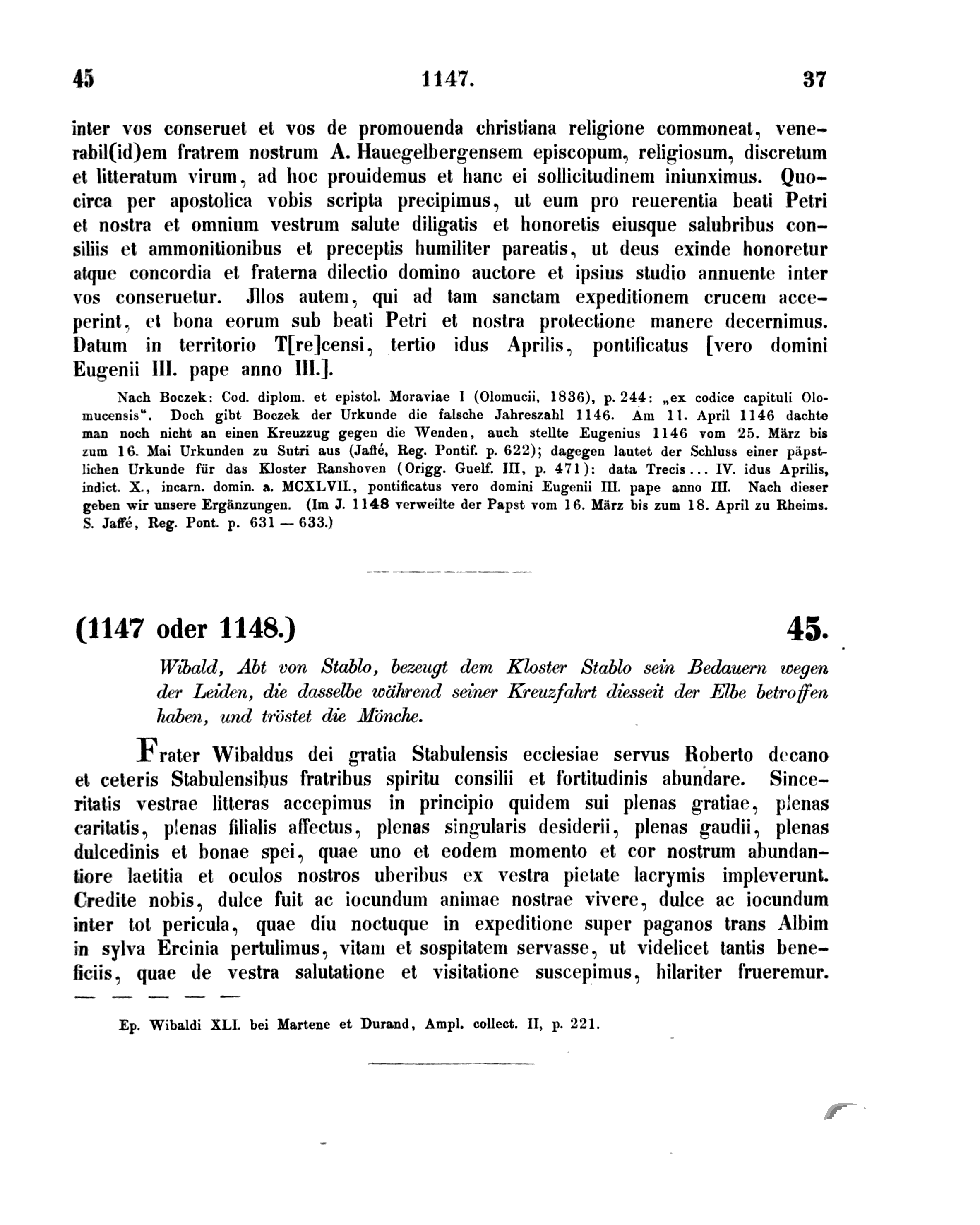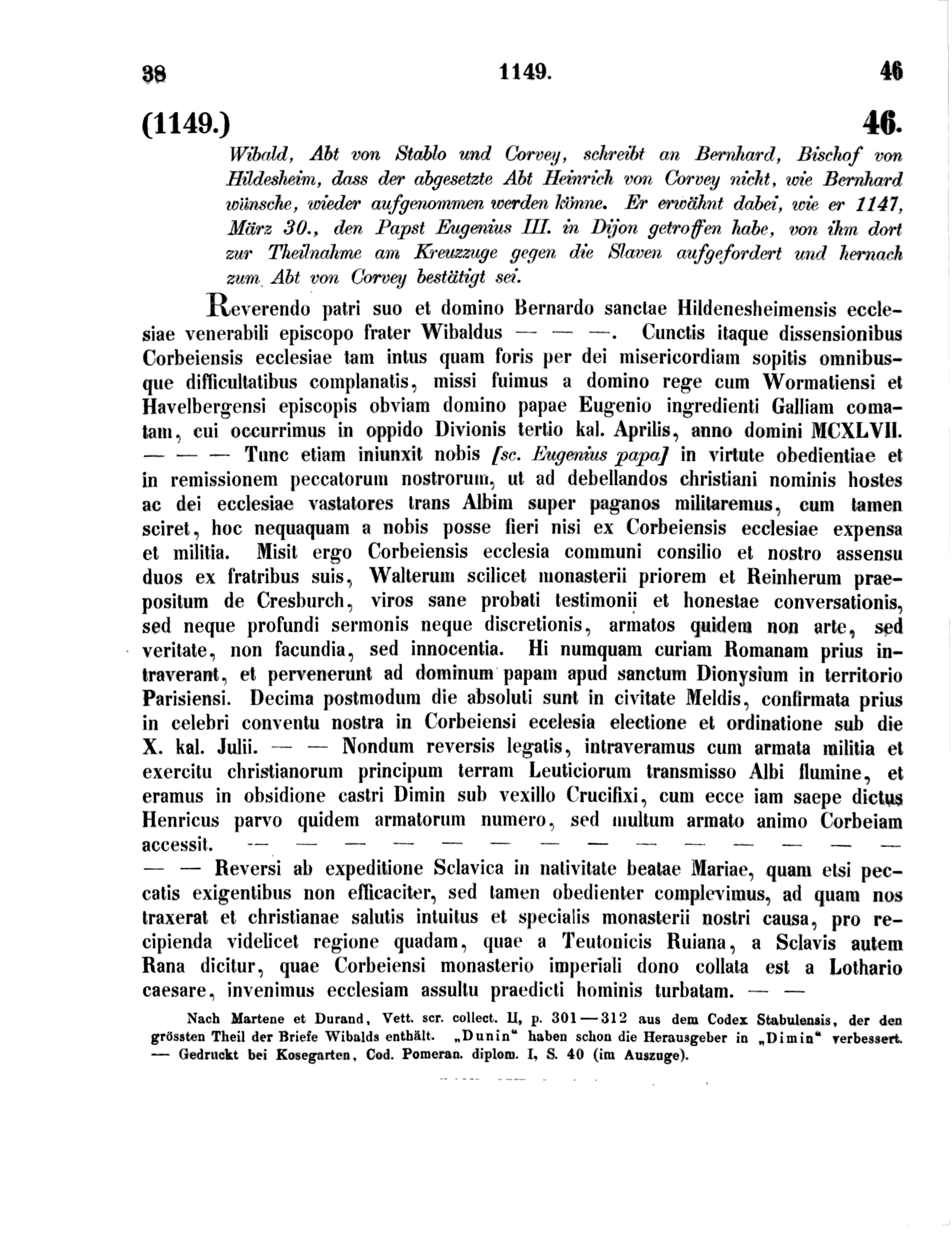Meklenburgisches Urkundenbuch - Band I -, Nr. 41, S. 111


Meklenburgisches Urkundenbuch - Band I -, Nr. 41, S. 111
Je rater Wibaldus dei gratia Stabulensis ecclesiae servus Roberto decano et celeris Stabulensibus fratribus spiritu consilii et fortitudinis abundare. Since- ritatis vestrae litteras aeeepimus in prineipio quidem sui plenas gratiae, plenas caritatis, plenas iilialis afFectus, plenas singularis desiderii, plenas gaudii, plenas dulcedinis et bonae spei, quae uno et eodem momento et cor nostrum abundan- üore laetitia et oculos nostros uberibus ex vestra pielate lacrymis impleverunt. Credile nobis, dulce fuit ac ioeundum animae nostrae vivere, dulce ac ioeundum inter tot pericula, quae diu noctuque in expeditione super paganos trans Albim in sylva Ercinia pertulimus, vitam et sospitatem senasse, ut videlicet tantis bene- fieiis, quae de vestra salutatione et visitatione suseepimus, hilariter frueremur.
Ep. Wibaldi XLI. bei Martene et Durand, Ampi, collect. II, p. 221.
38 1149. 46
Meklenburgisches Urkundenbuch, 1863 (Google data) 41, in: Monasterium.net, URL </mom/MeklenUrk/c0177d29-5903-43e6-a381-72d3d082377e/charter>, accessed at 2024-04-28+02:00
The Charter already exists in the choosen Collection
Please wait copying Charter, dialog will close at success